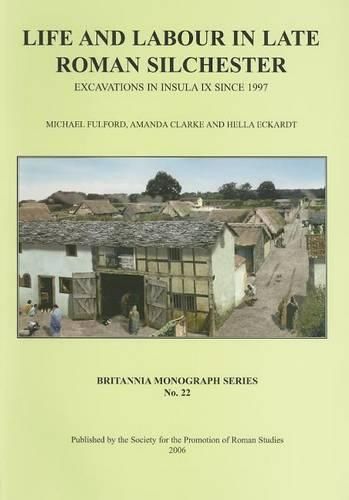Readings Newsletter
Become a Readings Member to make your shopping experience even easier.
Sign in or sign up for free!
You’re not far away from qualifying for FREE standard shipping within Australia
You’ve qualified for FREE standard shipping within Australia
The cart is loading…






The Society of Antiquaries’ excavation of Silchester’s Insula IX in 1893-4 left most of the stratigraphy undisturbed. A new programme of work has shown that the Insula underwent radical change, c. AD 250/300, with the construction of new workshop and residential buildings on the orientation of the Roman street-grid, following the demolition of mid-Roman buildings arranged on different, pre- and early Roman alignments. The plans of several properties and individual buildings were recovered, and analysis of the rich range of artefactual and biological data has allowed a detailed and differentiated characterisation of the life and occupations of the inhabitants in the 4th century. The context of the 5th century ogham-inscibed stone is explored and the history of the insula is followed into the 5th/6th century.
$9.00 standard shipping within Australia
FREE standard shipping within Australia for orders over $100.00
Express & International shipping calculated at checkout
The Society of Antiquaries’ excavation of Silchester’s Insula IX in 1893-4 left most of the stratigraphy undisturbed. A new programme of work has shown that the Insula underwent radical change, c. AD 250/300, with the construction of new workshop and residential buildings on the orientation of the Roman street-grid, following the demolition of mid-Roman buildings arranged on different, pre- and early Roman alignments. The plans of several properties and individual buildings were recovered, and analysis of the rich range of artefactual and biological data has allowed a detailed and differentiated characterisation of the life and occupations of the inhabitants in the 4th century. The context of the 5th century ogham-inscibed stone is explored and the history of the insula is followed into the 5th/6th century.